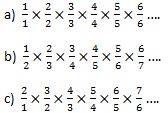Thanks to my second favourite math radio programme, More or Less, for this wonderful new insight into music and maths.

In her song, Pi, Kate Bush sings the first one-hundred and fifty or so digits of the celebrity number.
This is what she sang:
3.14159265358979323846264338327950288419716939937510582319749
44592307816406286208 8214808651328230664709384460955058223
You don’t need me to point out the wrong digits do you? Good. Then we can move on.
This has led to the Kate Bush Conjecture. Since Pi contains an infinite sequence of digits which never repeat surely the sequence Kate sings must occur somewhere! She never says she is starting at the beginning.
The Weak Kate Bush Conjecture says:
The sequence Kate sings exists somewhere in the decimal expansion of Pi.
The Strong Kate Bush Conjecture says:
Kate could have sung any finite sequence of digits and it would exist somewhere in the decimal expansion of Pi.
If Pi were a random sequence of digits then both conjectures are true. But Pi isn’t random, it is a well-defined number so we can’t make any assumptions. Instinctively I think it must be true, but that isn’t good mathematics, we need to prove it!
For example the following number is infinite and non-repeating but it doesn’t satisfy either conjecture: 0.01001100011100001111…
If the strong conjecture is true then every finite sequence exists in Pi. And they each exist an inifinite number of times since they can occur in an infinite number of longer sequences. Think about that, an infinite number of sequences each occurs an infinite number of times.
Everything that can be encoded digitally would occur within Pi. That would include the complete works of Shakespeare, naturally, and also the note you left for the milkman last Tuesday, and those poems you wrote when you were five.
Every religious book, all cannons and all translations, both forwards and backwards. Every prayer, every satanic chant and every children’s song.
That picture of the cosmic microwave background, the observations of Tycho Brahe and all of Kepler’s notes; and the results from CERN that will prove the Higgs-Boson (come on guys!)
It would include everything on your iPod, every episode of Math Factor and an alternative Math Factor with Groucho Marx.
Every album by Bob Dylan, or Kate Bush. And everything you’ve sung in the shower.
It would include this post and all the comments you will make, or think about making.
It would include every thought and idea you have ever had, or ever will have, or ever could have. (Gödel may have something to say about that)
And you thought Kate Bush was just a singer.
And you thought Pi was just a number.






 mathbun.com
mathbun.com